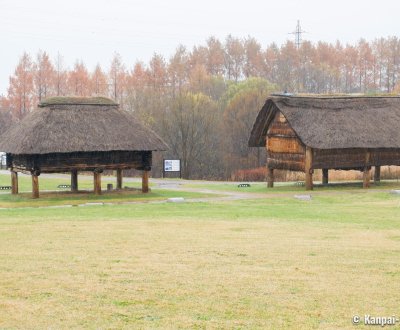Jomon Prehistoric Sites in Northern Japan
The Exceptional Archaeological Heritage
The remains of the Jomon Era in Northern Japan are scattered into 17 different sites throughout the northernmost area of the Tohoku and the south of Hokkaido Island. Featuring museums, ruins and life-sized replicas, they display the daily lives of the hunter-gatherers who lived in the archipelago during prehistoric times. The oldest ceramic works in the world were made by Jomon people 15,000 years ago. These archaeological sites are enlisted in the UNESCO World Heritage since July 27, 2021.
The historical Jomon period, 縄文時代 Jomon jidai in Japanese, is at the roots of the Japanese civilization, and starts at the end of the Paleolithic about 15,000 years ago to end about 2,400 years ago.
Jomon: a society evolving over more than 12 centuries
The word Jomon means "rope pattern" and is a reference to the times’ decoration methods of the ceramics that were unearthed by archaeologists. This primary artistic technique consisted in imprinting specific patterns on freshly modeled earthenware with ropes, and was a very distinctive feature of this era. Naturally, the objects' styles have evolved throughout the centuries to become increasingly intricate, and have a few variations depending on the areas.
The Jomon Period lasted a whole 12,600 years and has known several major developments that historians divided into 6 sub-periods:
The beginning of sedentism in Japan
The people of Jomon are at the origins of settlements throughout the Japanese territory as they gradually changed their lifestyle. The nomadic life indeed became less interesting as they had reached a reasonable daily comfort level, allowed by:
- The development of earthenware, used to store the harvests;
- The creation of increasingly sophisticated tools for hunting;
- The construction of permanent dwellings; and,
- The creation of villages ruled by social regulations and important rituals.
Trade also thrived and overcame the natural borders of the mountains or the sea, as can attest the many objects made in materials that cannot be found naturally in the area.
The Yayoi Period, marking the beginning of agriculture, follows the Jomon Period.
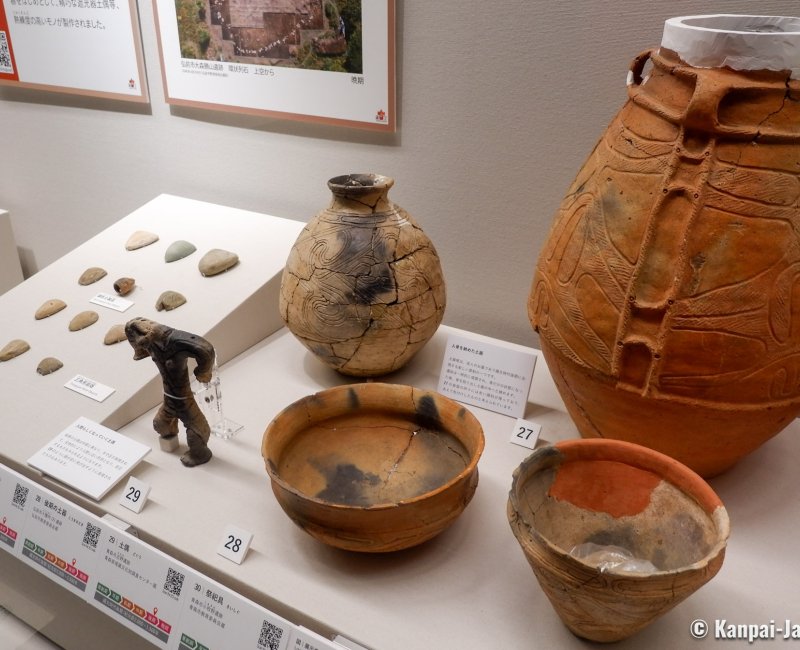
17 prehistoric sites inscribed by the Unesco in 2021
To immerse in the fascinating Jomon civilization, go to the north of Japan home to 17 preserved landmarks designated World Heritage Sites in 2021 by the UNESCO. Displaying rich and varied contents, these remarkable places offer:
- Museums, exhibiting various ancient objects excavated on site: mainly earthenware, tools, accessories, bones, figurines and weapons;
- Ruins of the past found in archaeological digs and staged in real-life sized reconstitution, from stone circles for rituals, to cemeteries and settlements.
These archaeological treasures are shared between 4 prefectures lying astride the north of the Tohoku area and the south of Hokkaido Island:
- Aomori with 8 sites (+ 1 not inscribed);
- Iwate with 1 site;
- Akita with 2 sites; and,
- Hokkaido with 6 sites (+ 1 not inscribed).
Some can be easy to access when located near a station or benefiting from a good shuttle connection, but most of the Jomon sites are far from the cities and require to drive a rental car 🚙 or take a taxi to reach them.
On site, explanations are displayed in Japanese, with sometimes a short English translation. We recommend using the Pocket Curator app (available on Google Play and Apple App Store) as it allows to have a virtual guided tour in English during your visit. Foreign visitors also have the possibility to walk the site with a touch-screen pad, including several languages settings, available at some of the sites.
You will find below an insight on the Jomon sites we have visited in the Tohoku area:
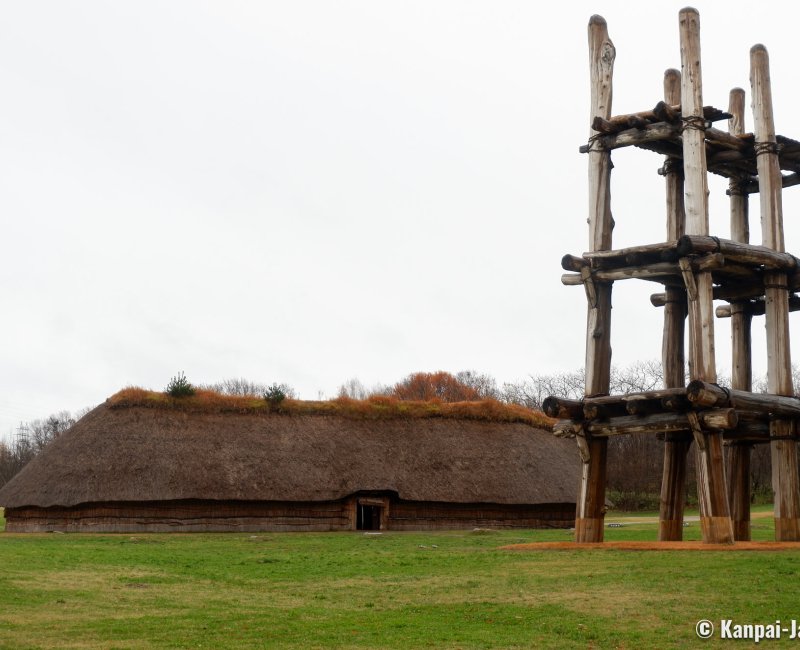
Sannai Maruyama
- Time period: between 3,900 and 2,200 BCE
- Location: Aomori City, not far form the Shin-Aomori Shinkansen station
Sannai Maruyama is an immense archaeological site displaying the ruins of an ancient Middle Jomon settlement. The ground still bear the traces of the dumping mounds left by the inhabitants, as well as the foundations of their pit-houses. Various types of dwellings were also reconstituted in life-size, to better comprehend the impressive size of some buildings and the architectural know-how of the times.
The neighboring museum is well made, with a focus on the prehistoric people’s daily life. In addition, the site’s restaurant serves contemporary dishes based on ingredients used during the Jomon period. Sannai Maruyama is definitely a must-see of Northern Japan’s historical remains.
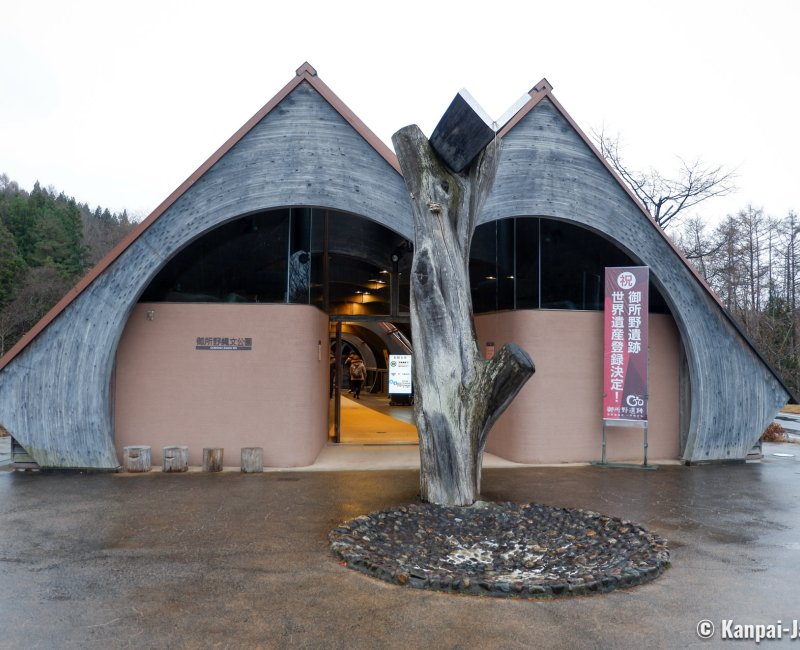
Goshono Ruins
- Time Period: between 2,500 and 2,000 years BCE
- Location: Ichinohe City (Iwate), near Ichinohe little station (Iwate Galaxy Railway Line, not JR) and 50 kilometers in the south of Hachinohe
The visit of Goshono Ruins starts with a wonderful modern museum displaying ancient objects and vestiges viewable behind a glassed floor. A 360 degrees animation is aired in a large circular room offering a thorough visual and audible immersion in the daily life of the Jomon people. Outside, houses and storage buildings were reconstructed around a former cemetery and are nearly covered by the vegetation and the snow in winter.
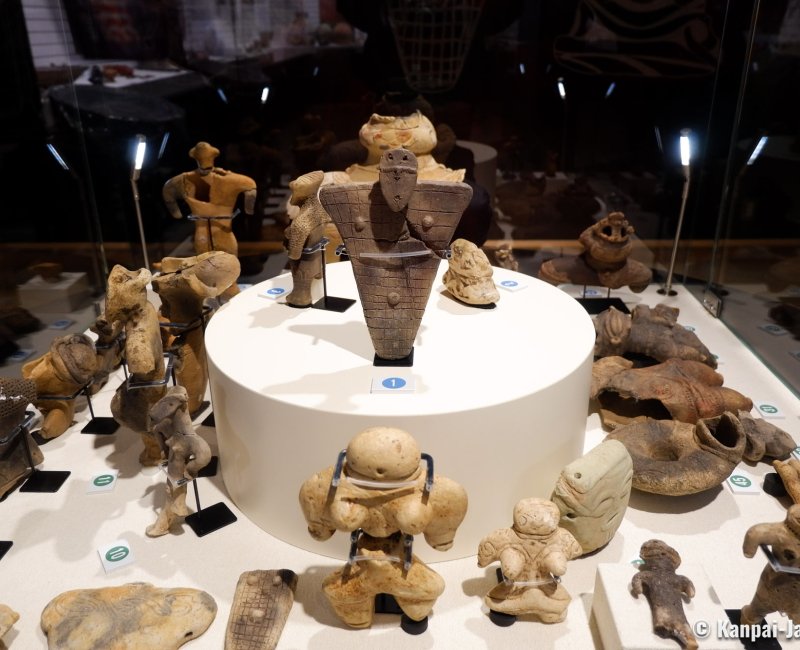
Isedotai Stone Circles
- Time period: between 2,000 and 1,700 years BCE
- Location: Kita-Akita City, at the exit of Jomon Ogata station (Akita Nairiku Line, not JR)
The 4 stone circles in Isedotai have been discovered at the summit of a small hill surrounded by fish-filled rivers. The place was formerly used to perform traditional rituals and bury the deceased of the community. It is a unique site in Japan, with its largest circle measuring 45 meters in diameter.
Note that only the museum next to the historical site is open all year round. The stone circles being in the outdoor, they are only visible from March to October, when they are not covered by snow.
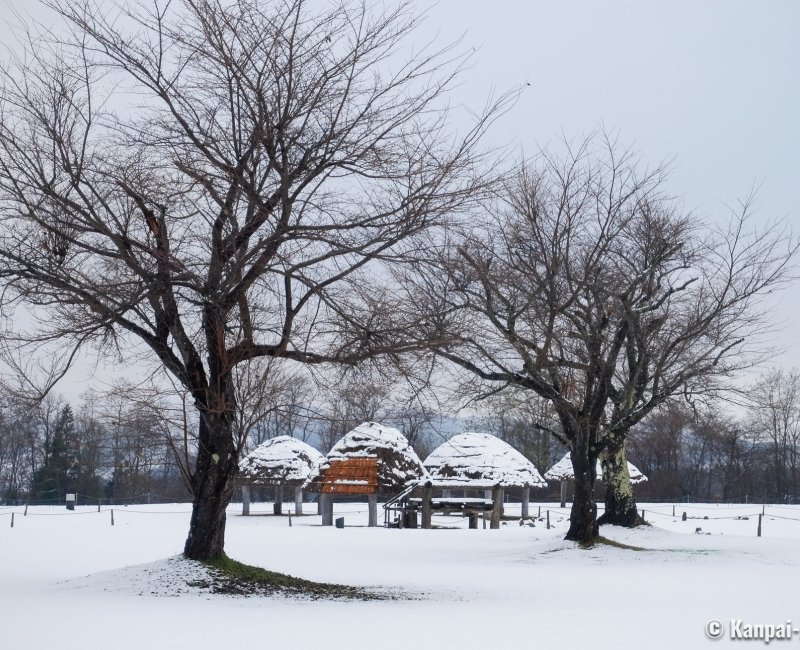
Oyu Stone Circles
- Time period: between 2,000 and 1,500 years BCE
- Location: Kazuno City (Akita), 5 kilometers from Towada-Minami station (Hanawa JR Line)
Here about 7,000 stones were arranged on the ground to shape 2 circles. Each rock weights on average 30kg and the biggest weights up to 200kg. All the stones were collected from the Akuya River, located about a dozen kilometers from the site.
Around the circles, a few buildings were reconstructed as well as the pillars used to heighten them. The adjacent museum shelters the artifacts unearthed during archaeological digs.
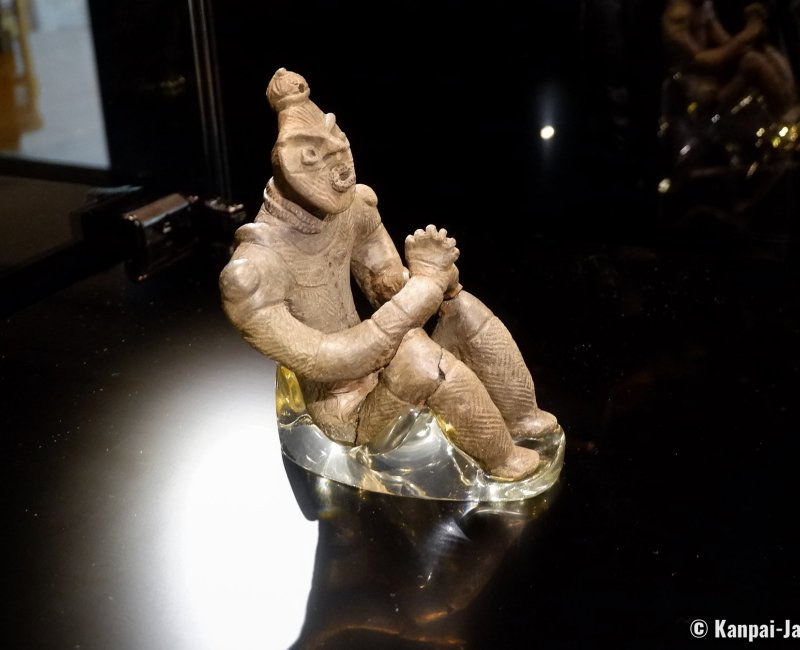
Korekawa Site
- Time period: between 4,000 and 400 years BCE
- Location: Hachinohe City (Aomori), south to the town’s center
The items excavated by the archaeological digs in this ancient city of the Jomon period are gathered in a remarkable museum. Korekawa Site is constituted by 3 adjacent but different zones, where prehistorical people have been living during nearly 3,600 years:
- Nakai (from 1,000 to 400 years BCE)
- Hotta (from 3,000 to 2,000 years BCE)
- Ichioji (from 4,000 to 2,000 years BCE)
The masterpiece of the museum is a clay figurine called Gassho Dogu that pictures a character sitting in prayer. There is no outdoor facility to visit but it certainly is one of the most extensive museums.
The exploration of Jomon prehistoric sites in northern Japan is truly fascinating and is suitable to Japanese children curious of their origins as well as to international grown-up visitors amateurs of archaeological discoveries.
For your first time, you don’t need to tour the 17 archaeological sites: just choose the most accessible ones on your itinerary. Note however that most of the outdoor sites are closed in winter, due to snow covering the vestiges. It is thus recommended to plan visits from spring 🌸 to autumn 🍁 so as to benefit from a more comprehensive immersion in the daily lives of Japan’s first organized societies.

